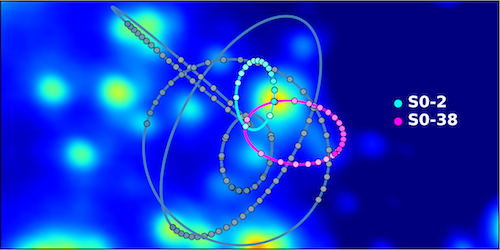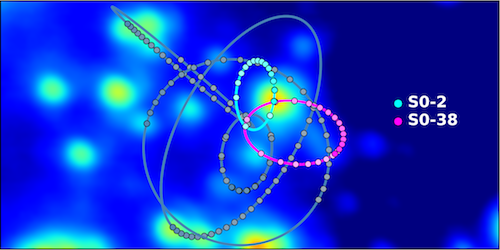Restricting the Fifth Force
General relativity has stood the test of time. But researchers are still exploring alternatives to the theory, attempting to unify gravity with other forces or to explain observations attributed to dark matter and dark energy. Many of these theories involve an additional force beyond the four known fundamental forces. Now, Andrea Ghez and Aurélien Hees at the University of California, Los Angeles, and co-workers, have analyzed the orbits of stars around the Milky Way’s center to derive limits on such a fifth force. While similar constraints had been obtained in weak gravitational fields, this is the first time fifth-force scenarios have been tested in a strong field, such as that created by the supermassive black hole at the center of our Galaxy.
The team analyzed 19 years of data collected by the Keck Observatory in Hawaii, characterizing the dynamics of two stars, S0-2 and S0-38, which orbit the Galactic center with periods of 15.9 and 19.2 years, respectively. Fitting the stellar dynamics with a model that includes a fifth force, they put limits on parameters describing the hypothetical force, such as the length over which it acts and its strength.
The obtained limits are less stringent than those previously found using the weak gravitational fields of our Solar System. But two factors could allow the accuracy of this test to surpass that of previous ones. The first is the observation of S0-2 in 2018, when the star will be at its closest distance to the Galactic center—a point where any deviations from general relativity should be greatest. The second is the availability of upcoming extremely large telescopes, which will allow more precise measurements of the stars’ orbits.
This research is published in Physical Review Letters.
–Matteo Rini
Matteo Rini is the Deputy Editor of Physics.





